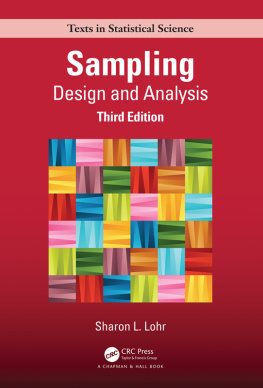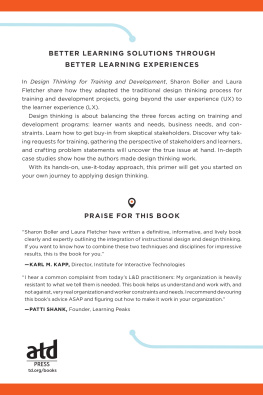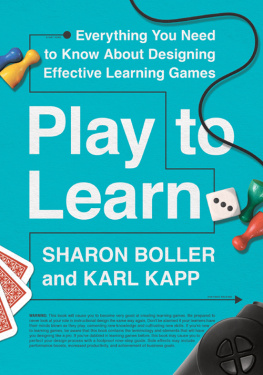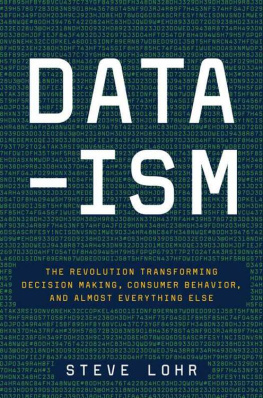Sharon L. Lohr - Sampling: Design and Analysis
Here you can read online Sharon L. Lohr - Sampling: Design and Analysis full text of the book (entire story) in english for free. Download pdf and epub, get meaning, cover and reviews about this ebook. year: 2021, publisher: CRC Press, genre: Politics. Description of the work, (preface) as well as reviews are available. Best literature library LitArk.com created for fans of good reading and offers a wide selection of genres:
Romance novel
Science fiction
Adventure
Detective
Science
History
Home and family
Prose
Art
Politics
Computer
Non-fiction
Religion
Business
Children
Humor
Choose a favorite category and find really read worthwhile books. Enjoy immersion in the world of imagination, feel the emotions of the characters or learn something new for yourself, make an fascinating discovery.
- Book:Sampling: Design and Analysis
- Author:
- Publisher:CRC Press
- Genre:
- Year:2021
- Rating:5 / 5
- Favourites:Add to favourites
- Your mark:
- 100
- 1
- 2
- 3
- 4
- 5
Sampling: Design and Analysis: summary, description and annotation
We offer to read an annotation, description, summary or preface (depends on what the author of the book "Sampling: Design and Analysis" wrote himself). If you haven't found the necessary information about the book — write in the comments, we will try to find it.
Sampling: Design and Analysis — read online for free the complete book (whole text) full work
Below is the text of the book, divided by pages. System saving the place of the last page read, allows you to conveniently read the book "Sampling: Design and Analysis" online for free, without having to search again every time where you left off. Put a bookmark, and you can go to the page where you finished reading at any time.
Font size:
Interval:
Bookmark:

Third Edition
Texts in Statistical Science Series
Joseph K. Blitzstein, Harvard University, USA
Julian J. Faraway, University of Bath, UK
Martin Tanner, Northwestern University, USA
Jim Zidek, University of British Columbia, Canada
Recently Published Titles
Beyond Multiple Linear Regression
Applied Generalized Linear Models and Multilevel Models in R
Paul Roback, Julie Legler
Bayesian Thinking in Biostatistics
Gary L. Rosner, Purushottam W. Laud, and Wesley O. Johnson
Linear Models with Python
Julian J. Faraway
Modern Data Science with R, Second Edition
Benjamin S. Baumer, Daniel T. Kaplan, and Nicholas J. Horton
Probability and Statistical Inference
From Basic Principles to Advanced Models
Miltiadis Mavrakakis and Jeremy Penzer
Bayesian Networks
With Examples in R, Second Edition
Marco Scutari and Jean-Baptiste Denis
Time Series
Modeling, Computation, and Inference, Second Edition
Raquel Prado, Marco A. R. Ferreira and Mike West
A First Course in Linear Model Theory, Second Edition
Nalini Ravishanker, Zhiyi Chi, Dipak K. Dey
Foundations of Statistics for Data Scientists
With R and Python
Alan Agresti and Maria Kateri
Fundamentals of Causal Inference
With R
Babette A. Brumback
Sampling: Design and Analysis, Third Edition
Sharon L. Lohr
For more information about this series, please visit: https://www.crcpress.com/ChapmanHall/CRC-Texts-in-Statistical-Science/book-series/CHTEXSTASCI
The number in parentheses is the page where the notation is introduced.
| ACS | American Community Survey. (4) |
| ASA | American Statistical Association. (91) |
| ANOVA | Analysis of variance. (90) |
| B | Ratioty/tx or, more generally, a regression coefficient. (121) |
| BMI | Body mass index (variable measured in NHANES). (291) |
| 2 | Chi-square. (349) |
| C | Set of units in a convenience (or other nonprobability) sample. (528) |
| cdf | Cumulative distribution function. (281) |
| CI | Confidence interval. (46) |
| Cov | Covariance. (57) |
| CV | Coefficient of variation. (42) |
| deff | Design effect. (286) |
| df | Degrees of freedom. (48) |
| Di | Random variable indicating inclusion in phase II of a two-phase sample. (460) |
| E | Expected value. (36) |
| f | Probability density or mass function. (281) |
| F | Cumulative distribution function. (281) In other contexts, F represents the F distribution. (404) |
| fpc | Finite population correction,=1n/N for a simple random sample. (41) |
| GREG | Generalized regression. (444) |
| GVF | Generalized variance function. (379) |
| HT | Horvitz-Thompson estimator or variance estimator. (236) |
| ICC | Intraclass correlation coefficient. (176) |
| IPUMS | Integrated Public Use Microdata Series. (78) |
| ln | Natural logarithm. (338) |
| logit | Logit(p)=ln[p/(1p)]. (441) |
| Mi | Number of ssus in the population from psu i. (170) |
| mi | Number of ssus in the sample from psu i. (171) |
| M0 | Total number of ssus in the population, in all psus. (170) |
| MAR | Missing at random given covariates, a mechanism for missing data. (322) |
| MCAR | Missing completely at random, a mechanism for missing data. (321) |
| MICE | Multivariate imputation by chained equations. (338) |
| MSE | Mean squared error. (37) |
| Theoretical value of mean in an infinite population, used in model-based inference.(56) | |
| NHANES | National Health and Nutrition Examination Survey. (273) |
| NMAR | Not missing at random, a mechanism for missing data. (323) |
| N | Number of units in the population. (34) |
| n | Number of units in the sample. (32) |
| OLS | Ordinary least squares. (420) |
| P | Probability operator. (34) |
| p | Proportion of units in the population having a characteristic. (38) |
| p^ | Estimated proportion of units in the population having a characteristic. (39) |
| PES | Post-enumeration survey. (487) |
| i | Probability that unit i is in the sample. (34) |
| ik | Probability that units i and k are both in the sample (joint inclusion probability). (235) |
| i | Probability that unit i responds to a survey after being selected for the sample, called the response propensity.(321) |
| i | Probability that unit i is selected on the first draw in a with-replacement sample. (220) |
| pps | Probability proportional to size. (229) |
| psu | Primary sampling unit. (167) |
| Qi | Random variable indicating the number of times unit i appears in a with-replacement sample. (73) |
| R | Set of respondents to the survey. (323) |
| Ri | Random variable indicating whether unit i responds to a survey after being selected for the sample. (321) In , Ri is the random variable indicating participation in a non-probability sample. (525) |
| R2 | Coefficient of determination for a regression analysis. (421) |
| Ra2 | Adjusted R2. (177) |
| S | Set of units in a probability sample. (34) |
| Sh | Set of units sampled from stratum h in a stratified sample. (84) |
| Si | Set of ssus sampled from psu i in a cluster sample. (171) |
| S(1) | Phase I sample. (459) |
| S(2) | Phase II sample. (460) |
| S2 | Population variance of y. (38) |
| s2 | Sample variance of y in a simple random sample. (42) |
| S | Population standard deviation of y,=S2. (38) |
| Sh2 | Population variance in stratum h. (84) |
| sh2 | Sample variance in stratum h, in a stratified random sample. (84) |
| Theoretical value of standard deviation for an infinite population, used in model-basedtheory. (59) | |
| SE | Standard error. (42) |
| SRS | Simple random sample without replacement. (39) |
| SRSWR | Simple random sample with replacement. (39) |
| ssu | Secondary sampling unit. (167) |
| SYG | Sen-Yates-Grundy, specifying an estimator of the variance. (236) |
| t | Population total, witht=ty=i=1Nyi. (35) |
| T | Population total in model-based approach. (59) When used as superscript on a vectoror matrix, as in |
Font size:
Interval:
Bookmark:
Similar books «Sampling: Design and Analysis»
Look at similar books to Sampling: Design and Analysis. We have selected literature similar in name and meaning in the hope of providing readers with more options to find new, interesting, not yet read works.
Discussion, reviews of the book Sampling: Design and Analysis and just readers' own opinions. Leave your comments, write what you think about the work, its meaning or the main characters. Specify what exactly you liked and what you didn't like, and why you think so.









